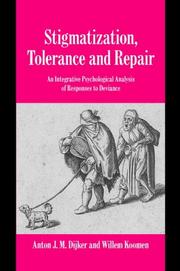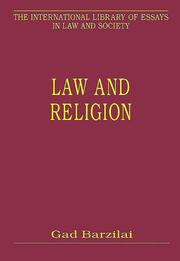| Listing 1 - 10 of 25 | << page >> |
Sort by
|

ISBN: 1282099124 9786612099120 0262266733 1435605985 0262261502 9780262266734 9781435605985 9780262012379 0262012375 9780262515924 026251592X 9781282099128 9780262261500 6612099127 Year: 2007 Publisher: Cambridge, MA : MIT Press,
Abstract | Keywords | Export | Availability | Bookmark
 Loading...
Loading...Choose an application
- Reference Manager
- EndNote
- RefWorks (Direct export to RefWorks)
Should the choice to engage in a faculty-student romance be protected or precluded? An argument that the right to choose a romantic partner is a fundamental right of conscience, protected by the U.S Constitution.Allen Ginsberg once declared that "the best teaching is done in bed," but most university administrators would presumably disagree. Many universities prohibit romantic relationships between faculty members and students, and professors who transgress are usually out of a job. In Romance in the Ivory Tower, Paul Abramson takes aim at university policies that forbid relationships between faculty members and students. He argues provocatively that the issue of faculty-student romances transcends the seemingly trivial matter of who sleeps with whom and engages our fundamental constitutional rights. By what authority, Abramson asks, did the university become the arbiter of romantic etiquette among consenting adults? Do we, as consenting adults, have a constitutional right to make intimate choices as long as they do not cause harm? Abramson contends that we do, and bases this claim on two arguments. He suggests that the Ninth Amendment (which states that the Constitution's enumeration of certain rights should not be construed to deny others) protects the "right to romance." And, more provocatively, he argues that the "right to romance" is a fundamental right of conscience--as are freedom of speech and freedom of religion. Campus romances happen. The important question is not whether they should be encouraged or prohibited but whether the choice to engage in such a relationship should be protected or precluded. Abramson argues ringingly that our freedom to make choices--to worship, make a political speech, or fall in love--is fundamental. Rules forbidding faculty-student romances are not only unconstitutional but set dangerous precedents for further intrusion into rights of privacy and conscience.
Freedom of expression --- Liberty of conscience --- Freedom of conscience --- Intolerance --- Law and legislation --- Conscience --- Toleration --- SOCIAL SCIENCES/Political Science/Public Policy & Law

ISBN: 9780511489815 9780521790192 9780521793681 9780511355844 051135584X 0511489811 9780511354243 051135424X 0521790190 0521793688 0511354827 9780511354823 1107174163 1281153621 9786611153625 1139130196 0511355327 Year: 2007 Publisher: Cambridge : Cambridge University Press,
Abstract | Keywords | Export | Availability | Bookmark
 Loading...
Loading...Choose an application
- Reference Manager
- EndNote
- RefWorks (Direct export to RefWorks)
Society is faced with a variety of undesirable behaviours and conditions such as crime, mental and physical illnesses and disabilities, that usually provoke different responses in people such as emotions of anger, fear or pity. In our evolutionary past, these emotions adaptively motivated the repair of interpersonal relationships, whereas more recently they may also result in other types of social control such as stigmatization or tolerance. Dijker and Koomen show, on the basis of elementary psychological processes, how peoples' responses are not only dependent on type of deviance but also on personality, situation, historical period and culture. They also examine the implications of these responses for the well-being and coping of people with deviant conditions or stigmas. This book provides conceptual tools for developing interventions to reduce stigmatization and offers a deeper understanding of the psychological basis of social control as well as opportunities to influence its potentially harmful consequences.
Toleration --- Stigma (Social psychology) --- Deviant behavior --- Social control. --- Social conflict --- Sociology --- Liberty --- Pressure groups --- Deviancy --- Social deviance --- Human behavior --- Conformity --- Social adjustment --- Identity (Psychology) --- Shame --- Social psychology --- Bigotry --- Intolerance --- Tolerance --- Virtues --- Discrimination --- Psychological aspects. --- Social aspects. --- Health Sciences --- Psychiatry & Psychology
Periodical
ISSN: 18780210 17519918 Year: 2007 Publisher: Kidlington, Oxford : Elsevier,
Abstract | Keywords | Export | Availability | Bookmark
 Loading...
Loading...Choose an application
- Reference Manager
- EndNote
- RefWorks (Direct export to RefWorks)
Diabetes Mellitus --- Diabetes --- Primary care (Medicine) --- Diabetes Mellitus. --- Primary Health Care. --- Diabetes. --- Primary medical care --- Brittle diabetes --- Diabetes mellitus --- IDDM (Disease) --- Insulin-dependent diabetes --- Ketosis prone diabetes --- Type 1 diabetes --- Primary Healthcare --- Primary Care --- Care, Primary --- Care, Primary Health --- Health Care, Primary --- Healthcare, Primary --- Primary Health Care --- Medical care --- Carbohydrate intolerance --- Endocrine glands --- Diabetic acidosis --- Glycosylated hemoglobin --- Diabetes Insipidus --- Glucose Intolerance --- Diseases --- Clinical Endocrinology --- Access to Primary Care --- Soins de santé primaires
Periodical
ISSN: 18780334 18714021 Year: 2007 Publisher: [Amsterdam] : Elsevier,
Abstract | Keywords | Export | Availability | Bookmark
 Loading...
Loading...Choose an application
- Reference Manager
- EndNote
- RefWorks (Direct export to RefWorks)
Diabetes --- Metabolism --- Diabetes Mellitus --- Metabolic Diseases --- Disorders --- Diabetes Mellitus. --- Metabolic Diseases. --- Diabète --- Métabolisme, Troubles du --- Endocrinologie --- Diabetes. --- Physiopathologie --- Disorders. --- Disorders of metabolism --- Metabolic diseases --- Metabolic disorders --- Metabolism, Disorders of --- Brittle diabetes --- Diabetes mellitus --- IDDM (Disease) --- Insulin-dependent diabetes --- Ketosis prone diabetes --- Type 1 diabetes --- Diseases, Metabolic --- Thesaurismosis --- Disease, Metabolic --- Metabolic Disease --- Thesaurismoses --- Anabolism --- Catabolism --- Metabolism, Primary --- Primary metabolism --- Diabetes Insipidus --- Glucose Intolerance --- Diseases --- Carbohydrate intolerance --- Endocrine glands --- Diabetic acidosis --- Glycosylated hemoglobin --- Biochemistry --- Physiology --- Troubles du métabolisme --- Endocrinology --- Diabète. --- Troubles du métabolisme. --- Pathophysiology --- Endocrinology. --- Pathophysiology. --- Internal medicine --- Hormones --- Diabète --- Troubles du métabolisme --- Diabète. --- Troubles du métabolisme.

ISBN: 128108753X 9786611087531 0387697373 0387697365 1441943455 Year: 2007 Publisher: New York ; London : Springer,
Abstract | Keywords | Export | Availability | Bookmark
 Loading...
Loading...Choose an application
- Reference Manager
- EndNote
- RefWorks (Direct export to RefWorks)
In the United States, 20.8 million children and adults, 7% of the population, have diabetes. While an estimated 14.6 million have been diagnosed, 6.2 million have yet to be diagnosed. Worldwide diabetes afflicts 150 million people. The World Health Organization estimates that by 2025 that figure will double. Diabetes is responsible for more deaths than AIDS and breast cancer, combined. It is a leading cause of blindness, kidney failure, amputations, heart complications and stroke. Treatment of Type 1 and Type diabetes has changed radically over the past few years. There are new opportunities for treating the key abnormality in diabetes, increased blood glucose, by effective agents such as new insulin preparations and oral agents. Increasing so-called non-glycemic intervention is of prime importance. Blood pressure lowering therapies, anti-cholesterol strategies, and specific treatment related to complications is becoming increasingly important. Pharmacotherapy of Diabetes is a unique, invaluable guide to all aspects of the pharmacological treatment of diabetes, covering basic concepts and an in-depth review of current and future therapies. This work provides an overview for the new changes in therapies that can be implemented in clinical practice and treatment of the diabetic patient.
Diabetes --- Diabetics. --- Chemotherapy. --- Research. --- Complications --- Treatment. --- Medicine. --- Diabetes. --- Endocrinology. --- Medicine & Public Health. --- Internal medicine --- Hormones --- Brittle diabetes --- Diabetes mellitus --- IDDM (Disease) --- Insulin-dependent diabetes --- Ketosis prone diabetes --- Type 1 diabetes --- Carbohydrate intolerance --- Endocrine glands --- Diabetic acidosis --- Glycosylated hemoglobin --- Clinical sciences --- Medical profession --- Human biology --- Life sciences --- Medical sciences --- Pathology --- Physicians --- Diseases --- Chronically ill --- Diabetes research --- Patients --- Endocrinology .

ISBN: 1281107921 9786611107925 0387722041 0387722033 1441924698 Year: 2007 Publisher: Austin, Tex. : New York, N.Y. : Landes Bioscience ; Springer Science+Business Media,
Abstract | Keywords | Export | Availability | Bookmark
 Loading...
Loading...Choose an application
- Reference Manager
- EndNote
- RefWorks (Direct export to RefWorks)
More than 18 million people in the United States have diabetes mellitus, and about 90% of these have the type 2 form of the disease. In addition, between 17 and 40 million people have insulin resistance, impaired glucose tolerance, or the cluster of abnormalities referred to variably as the metabolic syndrome, the dysmetabolic syndrome, syndrome X, or the insulin resistance syndrome. In all of these disorders, a central component of the pathophysiology is insulin resistance, i.e., reduced responsiveness to insulin in tissues such as muscle, fat and liver. Insulin resistance is also closely linked to other common health problems, including obesity, polycystic ovarian disease, hyperlipidemia, hypertension, and atherosclerosis. In this book, we will attempt to dissect the complexity of the molecular mechanisms of insulin action with a special emphasis on those features of the system that are subject to alteration in type 2 diabetes and other insulin resistant states. We explore insulin action at the most basic levels, through complex systems. The book will be appealing to basic and clinical scientists.
Insulin --- Physiological effect. --- Hormones --- Hypoglycemic agents --- Pancreas --- Proinsulin --- Secretions --- Endocrinology. --- Cytology. --- Diabetes. --- Cardiology. --- Cell Biology. --- Heart --- Internal medicine --- Brittle diabetes --- Diabetes mellitus --- IDDM (Disease) --- Insulin-dependent diabetes --- Ketosis prone diabetes --- Type 1 diabetes --- Carbohydrate intolerance --- Endocrine glands --- Diabetic acidosis --- Glycosylated hemoglobin --- Cell biology --- Cellular biology --- Biology --- Cells --- Cytologists --- Diseases --- Endocrinology . --- Cell biology.
Book
ISSN: 0005710X ISBN: 9783769609677 3769609670 Year: 2007 Volume: 130 Publisher: München Bayerische Akademie der Wissenschaften, Philosophische-historische Klasse
Abstract | Keywords | Export | Availability | Bookmark
 Loading...
Loading...Choose an application
- Reference Manager
- EndNote
- RefWorks (Direct export to RefWorks)
Ecclesiastical law --- Church and state --- Freedom of religion --- History --- History. --- Freedom of worship --- Intolerance --- Liberty of religion --- Religious freedom --- Religious liberty --- Separation of church and state --- Freedom of expression --- Liberty --- Law and legislation --- Ecclesiastical law - Germany - History --- Church and state - Germany - History --- Freedom of religion - Germany - History

ISBN: 0754624943 9780754624943 Year: 2007 Publisher: Aldershot: Ashgate,
Abstract | Keywords | Export | Availability | Bookmark
 Loading...
Loading...Choose an application
- Reference Manager
- EndNote
- RefWorks (Direct export to RefWorks)
Religion and state. --- Religion and law. --- Freedom of religion. --- Freedom of religion --- Religion and law --- Religion and state --- State and religion --- State, The --- Law --- Law and religion --- Freedom of worship --- Intolerance --- Liberty of religion --- Religious freedom --- Religious liberty --- Separation of church and state --- Religious aspects --- Law and legislation --- Freedom of expression --- Liberty
Book
ISBN: 9788466930512 8466930515 Year: 2007 Volume: 18 Publisher: Madrid: Universidad complutense de Madrid,
Abstract | Keywords | Export | Availability | Bookmark
 Loading...
Loading...Choose an application
- Reference Manager
- EndNote
- RefWorks (Direct export to RefWorks)
Religious tolerance --- Freedom of religion --- History --- History. --- Tolerance, Religious --- Toleration --- Freedom of worship --- Intolerance --- Liberty of religion --- Religious freedom --- Religious liberty --- Separation of church and state --- Freedom of expression --- Liberty --- Law and legislation --- Religious tolerance - Rome --- Freedom of religion - Rome --- Religious tolerance - Spain - History --- Freedom of religion - Spain - History --- Paganisme --- Christianisme --- Religions --- Tolérance religieuse --- Relations --- Antiquité --- Rome

ISBN: 1281936960 9786611936969 904742350X 9789047423508 9004162666 9789004162662 9789004162662 Year: 2007 Volume: v. 93 Publisher: Leiden ; Boston : Martinus Nijhoff,
Abstract | Keywords | Export | Availability | Bookmark
 Loading...
Loading...Choose an application
- Reference Manager
- EndNote
- RefWorks (Direct export to RefWorks)
The child’s right to religious freedom in international law has never been considered in a comprehensive fashion, yet key issues include the prevention of indoctrination, religious clothing, the relationship of the child with parents and religious communities, and the duties of the state to the child. Building on a sociological analysis of religious children, a body of international legal materials is analysed against a theoretical model of what the child’s right ought to be. This book is the first attempt at analysing what international law says on the question, the result is a compelling analysis of the definitive position of international law on the child’s right to religious freedom.
Godsdienstvrijheid. --- Rechten van het kind. --- Children's rights. --- Freedom of religion. --- Freedom of religion --- Freedom of worship --- Intolerance --- Liberty of religion --- Religious freedom --- Religious liberty --- Separation of church and state --- Freedom of expression --- Liberty --- Child rights --- Children --- Children's human rights --- Children's rights --- Rights of children --- Rights of the child --- Human rights --- Law and legislation --- Civil rights --- Legal status, laws, etc.
| Listing 1 - 10 of 25 | << page >> |
Sort by
|

 Search
Search Feedback
Feedback About UniCat
About UniCat  Help
Help News
News